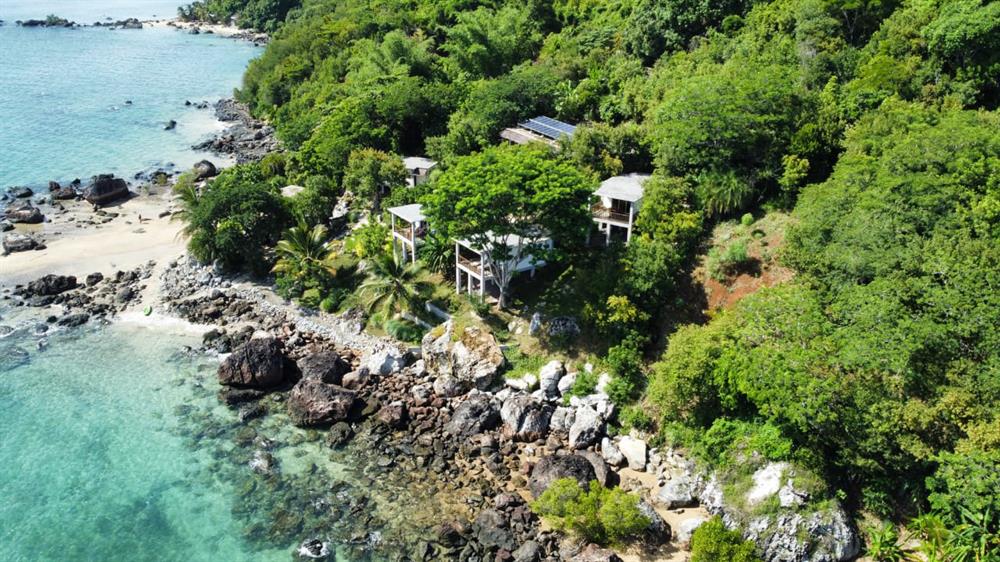KNYSNA NEWS - Nosy Komba is the second-most populated Madagascan island after Nosy Be, with approximately 4 000 people and is only 15 minutes away from Hell Ville by boat.
It acts as a link between Nosy Be and Madagascar, and a few CX locals and fellow Saffas have made the island as well as a few other Madagascan islands their home in recent years.
Monica Venter takes us through some of their stories.
Nosy Komba was originally known as Nosy Ambariovato, which means "Island surrounded by stones". It is also surrounded by volcanic rocks that protect it from the bay's waves. It is part of the archipelago that surrounds Madagascar. It is officially part of Madagascar and about 40 minutes away from the mainland by boat. The main languages are French and Malagasy, but most of the inhabitants can speak or understand English.
When you look down onto Nosy Komba from the air it looks like a tortoiseshell. There are many houses and villages all around the shoreline, but no cars or roads. Instead pathways lead up into the mountain and through the forest.
Interestingly enough, there are many South Africans living on Nosy Komba and also on some of the other islands surrounding Madagascar.
The Venters
Isak and Sunette Venter set such an example when they sold their business in Knysna and decided in 2019 to live their dream. They bought a piece of land on Nosy Komba and built a lodge which they wanted to be practical, modern and suited for people who want to escape the daily hustle and bustle of their busy lives to enjoy the serenity of the island.
They call their lodge "Komba on the Rocks". It is situated on the north-eastern side of the island. Their nearest village is Tam Tam where the islanders build their pirogues.
They started with nothing and changed it into something worthwhile and creative to be enjoyed by themselves as well as by tourists. The chalets, restaurant, lush garden, waterfall, the spectacular view across the sea to the mainland and the sea all add to an absolute serene experience.
It took them three years to finally open the lodge for guests. As the locals say, it went 'mora mora' - slowly, slowly. Today there are five chalets, a restaurant and a garden with tropical fruit, a collection of different herbs, vegetables and luscious plants.
Building this from scratch was accompanied by hard labour, sweat and some teeth gritting, but with absolute compassion and a vision of constructing something both beautiful and practical.
 Lemurs are a common sight on the island.
Lemurs are a common sight on the island.
Other Saffas on the island
About 10 minutes by boat from them lives another South African couple, Paul and Marlise, who sold their property in Pretoria and built a house on Nosy Komba for themselves and their two kids. Paul was severely injured by a gunshot in their house in Pretoria. His wife was also shot through the shoulder by the same intruders.
In Ampagourina lives another South African, Maxine from East London. This is a village near Komba on the Rocks where one can see the lemurs at Nosy Komba Black Lemur Sanctuary.
These animals were the most advanced of all tree-living animals and ruled the earth for about 15 million years. Then along came the monkey.
The monkey was superior to the lemur and outsmarted him in every way, resulting in the extinction of the prosimians across most of the world. Fortunately, monkeys never found their way to Madagascar and so the prosimians were left to develop in peace for another 35 million years.
 The Venters' new lodge, Komba on the Rocks.
The Venters' new lodge, Komba on the Rocks.
More CX citizens on Nosy Komba
Another married couple from South Africa, Quinten and Mariaan, lives on a boat and sails around the island, anchoring wherever they want to. They sold their business in Sedgefield to start a new life. Adrian and Grizelda sold their business in East London and now live on Sakatia, another island.
Willie and Ronel sailed by boat from South Africa and are now building a house on Nosy Komba. Lian and Elizna, also from Knysna, bought a piece of land on the mainland and are busy building a new home there.
These are just a few examples of South Africans finding a new home in Nosy Komba. They get together at weekends, go fishing, snorkelling, swimming in the sea or enjoy having a braai. You really do not have to be a diver to relish the remarkable variety of fish and coral that is to be found in the water around Komba on the Rocks.
The visibility is almost always at least ten metres and the water temperatures over 20 C. One can spend many happy hours bobbing above an aquatic wonderland in calm tropical water surrounded by many colourful fish and admiring coral gardens in their most perfect condition.
'We bring you the latest Knysna, Garden Route news'
















